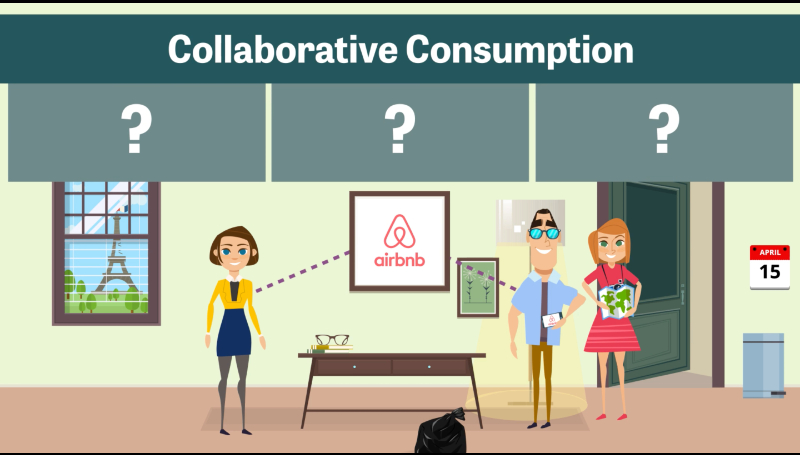About Sabine Benoit
Professor of Marketing at Surrey Business School. Service Researcher, interested in Retail Technology and the Sharing Economy
Biography

Beginning of 2016 Sabine Benoit joined Surrey Business School, Guildford, UK as a Professor of Marketing. She is member of the Department of Marketing. Beyond this, and since 2008, she is Director of the Competence Center for On-The-Go Consumption funded by Lekkerland GmbH & Co. KG, a European Wholesale company.
From 2013 until 2016 Sabine Benoit was Professor of Marketing at Roehampton Business School, London, UK. She became Director of Research at Roehampton Business School in 2014. Before and starting in 2008 she was holder of the Lekkerland Endowed Chair for Convenience & Marketing at the EBS Business School, Wiesbaden, Germany. At EBS she was Academic Director of the EBS Summer Schools and Chairmen of the doctoral committee.
From 2003 to 2008 Sabine Benoit was Assistant Professor at the Chair of Marketing and Commerce at the WHU – Otto Beisheim School of Management in Vallendar, Germany. Before Sabine Benoit was research assistant and doctoral candidate at the Douglas Endowed Chair of Service Management at the University of Hagen, Germany. She earned her doctoral degree in February 2004.
Her main research fields are Service and Retail Marketing. Her work has been published in leading international Journals e.g. the Journal of Service Research, Journal of Operations Management or Psychology & Marketing. In 2017 she received a best paper award (2nd) from the Journal of Service Research. She is in the Editorial Board of Journal of Service Research (JSR), Journal of Service Management (JoSM), Journal of Services Marketing (JSM) and Journal of Business Research (JBR). From JoSM she received the best reviewer award in 2013. She has taught and teaches courses in Marketing, Services & Retail Marketing and Research Methods on Bachelor, Master, MBA and Ph.D. Level.
Research Interests
- Service Marketing, in particular
- Customer participation
- Access based services
- Sustainability
- Customer perception
- Supply chain liability
- Food consumption
- On-the-go consumption
- Health orientation
Research Collaborations
- Prof. Dr. Zelal Ates, HEC Liege, Management School, Belgium
- Professor Tom Baker, University of Alabama, US
- Prof. Dr. Marion Buettgen, University of Hohenheim, Germany
- Prof. Dr. Heiner Evanschitzky, Aston Business School, UK
- Dr. Sebastian Forkmann, University of Alabama, US
- Prof. Dr. Julia Hartmann, EBS Business School, Germany
- Prof. Dr. Stephan Henneberg, Queen Mary University of London, UK
- Prof. Dr. Bjoern Ivens, University of Bamberg, Germany
- Prof. Dr. Jay Kandampully, Ohio State University, US
- Prof. Dr. Timothy Keiningham, St. John's University
- Dr. Stephan Ludwig, University of Surrey
- Prof. Dr. Christina Sichtmann, University of Vienna, Austria
- Prof. Dr. Martin Wetzels, Maastricht University
Publications
- Showcasing the diversity of service research: theories, methods and success of service articles
- Emerald Journal of Service Management
- [ Status: Accepted ]
- Repository URL: http://epubs.surrey.ac.uk/id/eprint/842167
- A triadic framework for collaborative consumption (CC): Motives, activities and resources and capabilities of actors
- Elsevier Journal of Business Research, 79, pp. 219-227.
- doi: 10.1016/j.jbusres.2017.05.004
- [ Status: Accepted ]
- Repository URL: http://epubs.surrey.ac.uk/id/eprint/841120
Collaborative consumption (CC) is an increasingly prevalent form of exchange. CC occurs within a triangle of actors: a platform provider (e.g., Uber), a peer service provider (e.g., an Uber driver) and a customer. The platform provider's main role is matchmaking, so that a customer can access assets of a peer service provider. This paper has three objectives. First, this article identifies three criteria to delineate CC from related constructs such as access-based consumption, sharing or renting. Second, it introduces a literature-based framework explicating the roles of the actors in the CC triangle along three dimensions: motives, activities and resources and capabilities. Third, it highlights areas for further research, such as the dynamics of CC, context-dependent motives and the emergence of professional (peer) service providers.
- Linking service convenience to satisfaction: Dimensions and key moderators
- Emerald Journal of Services Marketing, 31 (6), pp. 527-538.
- doi: 10.1108/JSM-10-2016-0353
- [ Status: Accepted ]
- Repository URL: http://epubs.surrey.ac.uk/id/eprint/841145
Purpose: Demand for service convenience, defined as a consumer’s perception of minimized time and effort spent to obtain a service, has increased in conjunction with certain sociocultural and demographic changes. Prior research notes the significance of service convenience, but the importance of different dimensions of service convenience as well as the role of key moderators affecting the link between convenience and satisfaction (like customer psychographic and sociodemographic characteristics) remain unaddressed. Design/methodology/approach: Two models are developed and tested: 1) a multidimensional model of service convenience with a formative measure of five service convenience dimensions: decision, access, search, transaction, and after-sales convenience; and 2) a moderator model hypothesizing different customer psychographic and sociodemographic characteristics (time pressure, shopping enjoyment, age, household size, income) that affect the link between service convenience and satisfaction. Findings: This study reveals that search convenience, followed by transaction and decision convenience, exerts the greatest influence on the perception of overall service convenience. In addition, those who value service convenience most are high-income, time-pressed consumers in smaller households who experience low shopping enjoyment. Originality/value: Providers have limited budgets for enhancing their services. Thus it is important to identify which dimension has the greatest influence on the perception of service convenience as well as the customer segments for which service convenience is most critical.
- The Interplay of Customer Experience and Commitment
- Emerald Journal of Services Marketing, 31 (2)
- doi: 10.1108/JSM-09-2016-0337
- [ Status: Accepted ]
- Repository URL: http://epubs.surrey.ac.uk/id/eprint/813789
Purpose
This research aims to better understand customer experience, as it relates to customer commitment and provides a framework for future research into the intersection of these emerging streams of research.
Design/methodology/approach
This research contributes to theoretical and practical perspectives on customer experience and its measurement by integrating extant literature with customer commitment and customer satisfaction literature.
Findings
The breadth of the domains that encompass customer experience – cognitive, emotional, physical, sensorial and social – makes simplistic metrics impossible for gauging the entirety of customers’ experiences. These findings provide strong support of the need for new research into customer experience and customer commitment.
Practical implications
Given the complexity of customer experience, managers are unlikely to track and manage all relevant elements of the concept. This research provides a framework identifying empirically the most salient attributes of customer experience with particular emphasis on those elements that enhance commitment. This offers insight into service design to correspond with specific commitment and experience dimensions.
Originality/value
This research is the first to examine the customer experience as it relates to customer commitment – a key factor in customer loyalty, positive word of mouth and other desired outcomes for managers and marketers. This paper provides a framework for future research into these emerging topics.
- Understanding on-the-go consumption: Identifying and quantifying its determinants
- Elsevier Journal of Retailing and Consumer Services, 31, pp. 32-42.
- doi: 10.1016/j.jretconser.2016.03.003
- Contagious Effects of Customer Misbehavior in Access-Based Services
- SAGE Journals Journal of Service Research, 19 (1) Article number 1 , pp. 3-21.
- doi: 10.1177/1094670515595047
- [ Status: Accepted ]
- Repository URL: http://epubs.surrey.ac.uk/810027/
Customer misbehavior in service settings is problematic for two reasons: (1) because of the direct damage it causes and (2) because of additional negative effects that arise from the contagion of such misbehavior. The authors extend existing theory of customer misbehavior by studying its contagious effect. The investigation focuses on access-based services, defined as transactions in which multiple consumers successively gain temporal, short-term access to a good, while legal ownership remains with the service provider (e.g., car sharing and fashion rentals). Due to the nature of these services, they are especially prone to indirect customer misbehaviour, which is directed at the accessed product and occurs in the absence of others. Two online experiments provide the first empirical evidence for a contagiousness of misbehavior and reveal that this effect is driven by customers’ perceptions of the social norms among the customer group. Moreover, they indicate that greater strength of the accessed product’s brand as well as lower anonymity of the accessed product’s owner attenuate contagion. A field experiment shows that an increase in the communal identification among access-based service customers reverses the contagious effect, with customers more likely to remove signs of previous users’ misbehavior. The results suggest that access-based service providers should address customer misbehavior by (a) investing in the products they offer access to, (b) establishing more personal relationships with customers, and, foremost, (c) increasing communal identification among customers.
- Does Service Employees’ Appearance Affect the Healthiness of Food Choice
- Wiley Psychology and Marketing, 32 (1), pp. 96-106.
- doi: 10.1002/mar.20765
- [ Status: Accepted ]
- Repository URL: http://epubs.surrey.ac.uk/810030/
Derived from previous research on social influence on food consumption and social comparison theory, this article examines the effect of service employees’ appearance on consumers’ food choice using an experimental study, involving a video manipulation and eye-tracking technique. The video shows a menu being proffered by a waitress whose degree of apparent healthiness varies (healthy, overweight, unhealthy lifestyle). The menu contains both healthy and unhealthy meal alternatives. The analysis of participants’ eye movements demonstrated that exposure to the overweight employee did not stimulate greater (i.e., earlier or longer) attention to unhealthy meal alternatives, whereas exposure to the employee who displayed an unhealthy lifestyle did. These findings have social and managerial implications: The postulated stigma according to which the presence of overweight others encourages unhealthy eating appears questionable. Service providers that might secretly hire according to body weight have no grounds to do so. In contrast, employees signaling an unhealthy lifestyle through their style choices prompt patrons to pay more attention to unhealthy meal alternatives. Food service providers might want to take this factor into consideration and actively manage the aspects that can be altered by simple measures.
- Creating Value in Retail Buyer-Vendor Relationships: A Service-Centered Model
- Elsevier Industrial Marketing Management, 44 (1), pp. 166-179.
- doi: 10.1016/j.indmarman.2014.10.013
- [ Status: Accepted ]
We present a “service-centered” model of retail buyer–vendor relationships, in which retail buyers’ perceptions of a vendor’s economic and social resources affect their assessments of relationship value and relationship outcomes. Economic resources offered at the organizational level of the vendor include brand equity and customer support activities (e.g., merchandising support and margin maintenance). Social resources offered at the individual level of the salesperson include special treatment and customer advocacy. Relationship outcomes include the buyer’ intention to grow the business, and in the event of business termination, maintain the interpersonal relationship with the sales representative. Survey data from 532 retail buyers were collected and analyzed using structural equation modeling. The results show that relationship value mediates the effects of economic and social resources on relationship outcomes. However, the process by which this occurs varies.
- Uncovering Collaborative Value Creation Patterns and establishing corresponding Customer Roles
- SAGE Journal of Service Research, 16 (4), pp. 471-487.
- doi: 10.1177/1094670513480851
- Understanding Firms’ Intentions to Use Non-ownership Services
- SAGE Journal of Service Research, 16 (2), pp. 171-185.
- doi: 10.1177/1094670513480851




